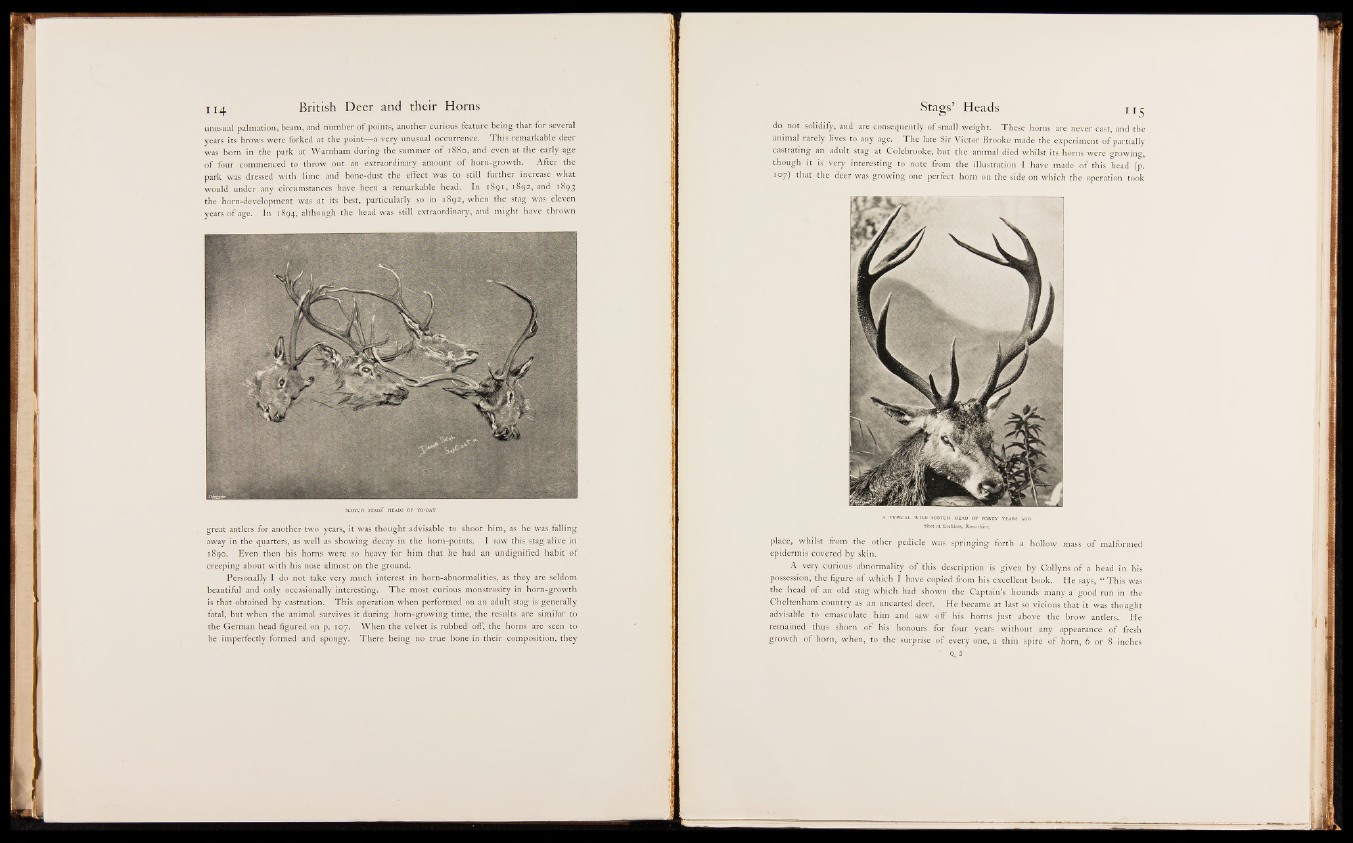
unusual palmation, beam, and number o f points, another curious feature being that for several
years its brows were forked at the point— a very unusual occurrence. This remarkable deer
was born in the park at Warnham during the summer o f 1880, and even at the early age
o f four commenced to throw out an extraordinary amount of horn-growth. After the
park was dressed with lime and bone-dust the effect was to still further increase what
would under any circumstances have been a remarkable head. In 1891, 1892, and 1893
the horn-development was at its best, particularly so in 1892, when the stag was eleven
years o f age. In 1894, although the head was still extraordinary, and might have thrown
SCOTCH STAGS’ HEADS OF TO-DAY
great antlers for another two years, it was thought advisable to shoot him, as he was falling
away in the quarters, as well as showing decay in the horn-points. I saw this stag alive in
1890. Even then his horns were so heavy for him that he had an undignified habit' o f
creeping about with his nose almost on the ground.
Personally I do not take very much interest in horn-abnormalities, as they are seldom
beautiful and only occasionally interesting. T h e most curious monstrosity in horn-growth
is that obtained by castration. This operation when performed on an adult stag is generally
fatal, but when the animal survives it during horn-growing time, the results are similar to
the German head figured on p. 107. When the velvet is rubbed off, the horns are seen to
be imperfectly formed and spongy. There being no true bone in their composition, they
do not solidify, and are consequently o f small weight. These horns are never cast, and the
animal rarely lives to any age. T h e late Sir Victor Brooke made the experiment o f partially
castrating an adult stag at Colebrooke, but the animal died whilst its horns were growing,
though it is very interesting to note from the illustration I have made o f this head (p.
107)’ that the deer was growing one perfect horn on the side on which the operation took
place, whilst from the other pedicle was springing forth a hollow mass o f malformed
epidermis covered by skin.
A very curious abnormality o f this description is given by Collyns o f a head in his
possession, the figure o f which I have copied from his excellent book. He says, “ This was
the head o f an qld stag which had shown the Captain’s hounds many a good run in the
Cheltenham country as an uncarted deer. He became at last so vicious that it was thought
advisable to emasculate him and saw off his horns just above the brow antlers. He
remained thus shorn o f his honours for four years without any appearance o f fresh
growth o f horn, when, to the surprise o f every one, a thin spire o f horn, 6 or 8 inches